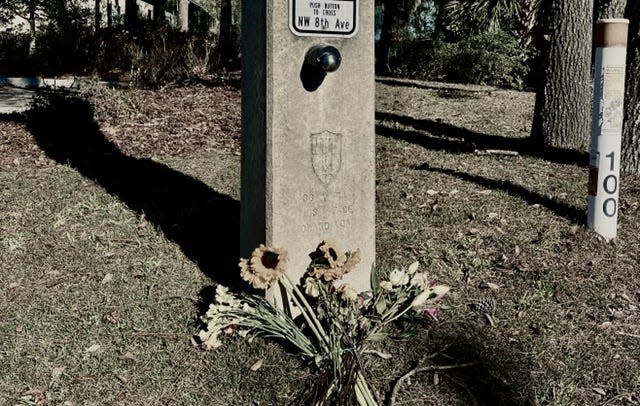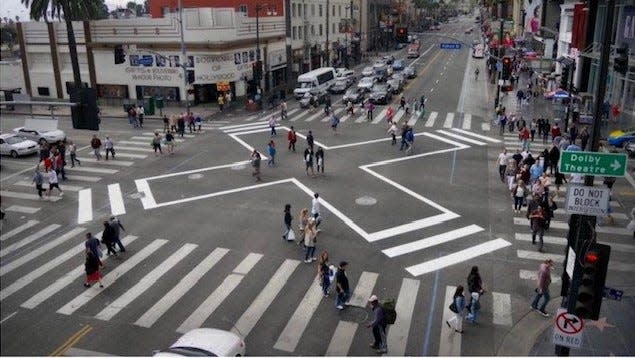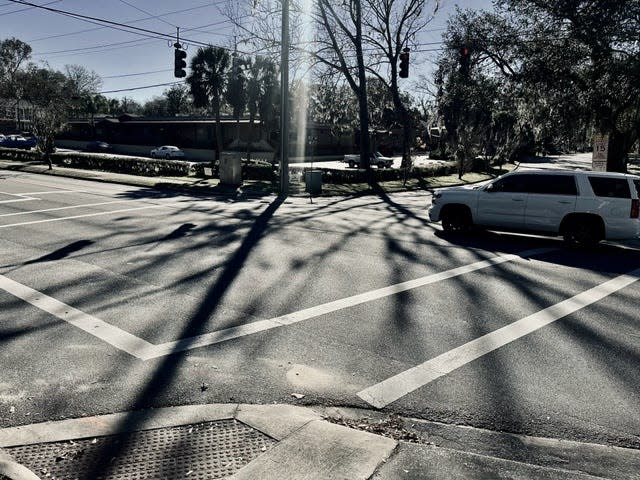Use tragedy to take a holistic look at Eighth Avenue in Gainesville

A spray of dead flowers propped on a concrete pole was a sad reminder that something terrible had happened at the intersection of Northwest Eighth Avenue and Northwest 10th Street.
Just four days into the new year, Sabrina Obando, a 22-year old University of Florida graduate student from Miami, was walking across Eighth Avenue, in the crosswalk. She was struck down and killed by the driver of a pickup truck turning off 10th.
She is not the first young person to come to this university city seeking an education only to have her life brutally cut short on a Gainesville street. But unlike other recent student victims she died on Northwest Eighth, not University Avenue.
That distinction is cold comfort to grieving friends and family. But if city officials really want to make Gainesville’s Vision Zero goal something more than an empty promise, the difference is critical.
More from Ron Cunningham:
Clemons, Perry seeking to remake Alachua County government in their own image
Gainesville’s destiny doesn’t hinge on bigger and better traffic funnels
'Saving Florida Springs' provides remedies for problems ailing springs
Like University, Eighth Avenue is an east-west corridor through the heart of the city. Unlike University, Eighth is almost entirely under city jurisdiction. So most safety improvements the city might want to make on Eighth requires no buy-in from that glacial bureaucracy known as the Florida Department of Transportation.
Commissioner Harvey Ward thinks the fatal intersection might be turned into a “scramble” crossing. Basically a scramble crossing requires all vehicles to stop while pedestrians may cross the street in any direction — even diagonally through the middle of the intersection.
Well-designed scramble crossings on University and 13th Street could arguably create a safer environment for pedestrians trying to arrive alive at UF’s front door. But FDOT doesn’t like the things. They might slow traffic.

Scramble crossings are a great example of tactical urbanism. Instead of costly intersection modifications, the application of a little paint can help save lives more quickly and at less expense.
But don’t just focus on the spot where a young life ended, commissioners.
Use this latest tragedy to take a holistic look at Eighth Avenue and all of its disjointed segments.
How disjointed?
The stretch of Eighth between Waldo Road and Main Street has lots of so-called “suicide lanes” that allow cars to turn without the slowing cars behind them. But it’s hostile territory for cyclists.
The six blocks between Main and Sixth streets (the only segment under FDOT control) is Gainesville’s dumbest stroad. It suddenly opens up into four lanes of fast-moving traffic … for just six blocks. What’s the point?
West of Main, bike lanes finally appear. But traffic tends to exceed the posted limit as UF commuters try to get to work and home again as quickly as possible.
And don’t even get me started on Eighth between 22nd and 34th streets. That two-lane east, one-lane west configuration is a bizarre political compromise that neither satisfies folks who wanted to slow things down or those who liked it when it was a speedway to suburbia.
Following Sabrina Obando’s death, the pedestrian safety group Florida Not One More petitioned the city to lower the speed limit on Eighth from 35 to 20 mph. That’s fine, but the reality is that street design, not posted limits, dictates traffic speed. So long as drivers feel comfortable going 35, 40 or faster on Eighth, they will do so.

The challenge for Gainesville is to traffic-calm all of Eighth Avenue by design, using tactical urbanism techniques whenever possible for expediency’s sake.
What will it take to make Eighth Avenue a Gainesville complete street? Let’s find out.
Ron Cunningham is former editorial page editor of The Sun. Read his blog at www.floridavelocipede.com. Email him at ron@freegnv.com.

Join the conversation
Send a letter to the editor (up to 200 words) to letters@gainesville.com. Letters must include the writer's full name and city of residence. Additional guidelines for submitting letters and longer guest columns can be found at bit.ly/sunopinionguidelines.
Journalism matters. Your support matters.
Get a digital subscription to the Gainesville Sun. Includes must-see content on Gainesville.com and Gatorsports.com, breaking news and updates on all your devices, and access to the Gainesville.com ePaper. Visit www.gainesville.com/subscribenow to sign up.
This article originally appeared on The Gainesville Sun: Ron Cunningham: Gainesville should make design changes to save lives

